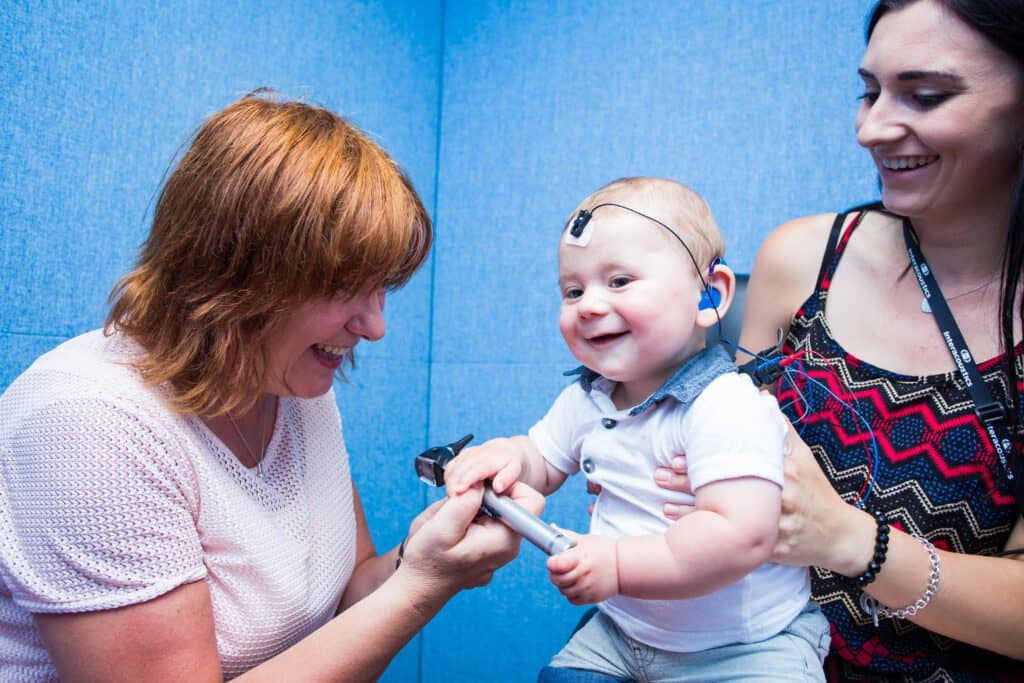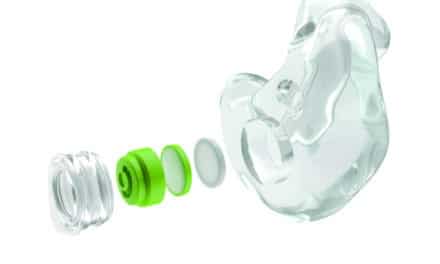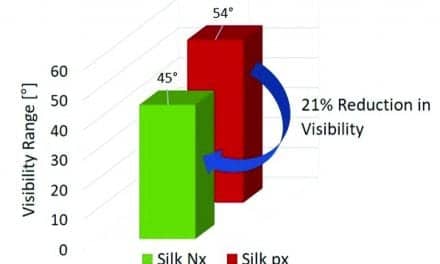Researchers say that CEAP test improves accuracy of hearing aid fitting in infants
A recent study suggests that parents of newborn babies with hearing loss, might soon be able to have the reassurance that their babies are hearing speech through their hearing aids.
“One in a 1000 babies are born with hearing loss and go on to have hearing aids fitted in the first months of life. The problem is, it’s not until they are around 7-9 months old, at the earliest, when we can use traditional tests of hearing,” explained lead author Anisa Visram, a lecturer at The University of Manchester. “This can leave parents concerned about whether or not their babies are hearing the sounds the hearing aids are providing. However, our findings show the Cortical Auditory Evoked Potential test can help reassure parents about how babies are hearing through their hearing aids.”

The Cortical Auditory Evoked Potential (CAEP) test—or Cortical test for short—was assessed on 103 babies aged three to seven months by University of Manchester scientists in a research van traveling across the UK.
According to the researchers, in almost all cases, the cortical test showed a positive response to speech played through the baby’s hearing aids when the baby could hear the speech at a clear level, and showed a negative result when the baby could not hear the speech.
The study—which was carried out before the pandemic—was published in the journal Ear and Hearing and was funded by the National Institute for Health and Care Research (NIHR), Research for Patient Benefit Programme, NIHR Manchester Biomedical Research Centre, the William Demant Foundation, the Marston Family Foundation, and the Owrid Foundation.
Experts shared that although the cortical test has been used in Australia, the Manchester team in collaboration with the Interacoustics Research Unit (Lyngby, Denmark), developed a new protocol which used different types of sound stimuli. They also showed the benefit of repeat testing to improve its sensitivity.
The researchers explained that the electrodes are placed on the scalp which then record activity in the brain to show whether the baby is perceiving the sound from their hearing aids.
Experts say that all newborn babies have a hearing screening test when they are born. If they fail the screening test, they are given another test by audiologists, while the baby is asleep, using electrodes on the scalp. If the follow up test—known as the ABR—shows a hearing loss, they are then fitted with hearing aids, a process which can take up to three months.
“This study would not have been possible without our research van which enabled us to get to parents across the country—a brilliant innovation,” concluded Visram.
Source: University of Manchester
Images: University of Manchester




